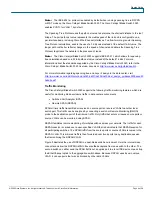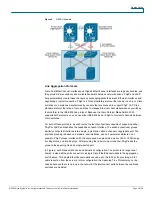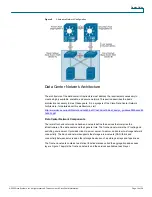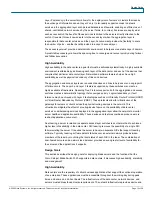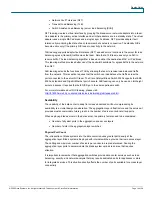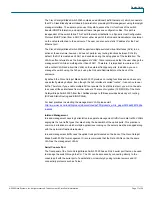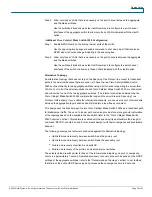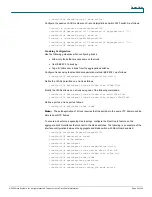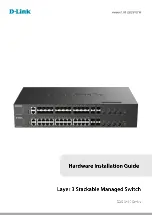
Design Guide
© 2008 Cisco Systems, Inc. All rights reserved. This document is Cisco Public Information.
Page 22 of 28
Step 2. Allow only those VLANs that are necessary on the port channel between the aggregate
and the blade switches.
Use the switchport trunk allowed vlan vlanID command to configure the port-channel
interfaces of the aggregate switch to allow only those VLANs indicated with the vlanID
option.
Additional Cisco Catalyst Blade Switch 3020 Configuration
Step 1. Enable BPDU Guard on the internal server ports of the switch.
Use the spanning-tree bpduguard enable command to shut down a port that receives a
BPDU when it should not be participating in the spanning tree.
Step 2. Allow only those VLANs that are necessary on the port channels between the aggregate
and the blade switches.
Use the switchport trunk allowed vlan vlanID command to configure the port-channel
interfaces of the switch to allow only those VLANs indicated with the vlanID option.
Alternative Topology
An alternative topology that does not rely on the Spanning Tree Protocol to account for redundant
paths in the network (because there are none) is to have the two Cisco Catalyst Blade Switch
3020s connect directly to two aggregate switches using a port channel supporting the server-farm
VLANs. Four to 8 of the external uplinks of each Cisco Catalyst Blade Switch 3020 are channeled
and connected to one of the two aggregate switches. (The internal connections between the two
Cisco Catalyst Blade Switch 3020s complete the loop and thus would require Spanning Tree
Protocol.) Alternatively, if you enable the internal interconnects, you can user Layer 3 interconnects
between the aggregation layer switches and still maintain a loop-free environment.
This design uses the links between the two Cisco Catalyst Blade Switch 3020s as a redundant path
for blade-server traffic. The use of a longer path cost value provides for a more granular calculation
of the topology based on the available link bandwidth (refer to the “Cisco Catalyst Blade Switch
3020 Features” section). This feature is enabled with the spanning-tree pathcost method long CLI
command. RPVST+ should be used in this network design for its fast convergence and predictable
behavior.
The following convergence tests were conducted against this alternative topology:
●
Uplink failure and recovery between switch-A and the primary root
●
Uplink failure and recovery between switch B and the secondary root
●
Failure and recovery of switch A and switch B
●
Failure and recovery of the primary and secondary root switches
These tests yielded results similar to those of the recommended topology. Layer 2 convergence
occurs in approximately 1 second. As stated previously, recovery at Layer 3 depends on the HSRP
settings of the aggregate switches (refer to the “Recommended Topology” section). In our testbed,
the failure of the active HSRP device typically increased the convergence time to 5 seconds.

